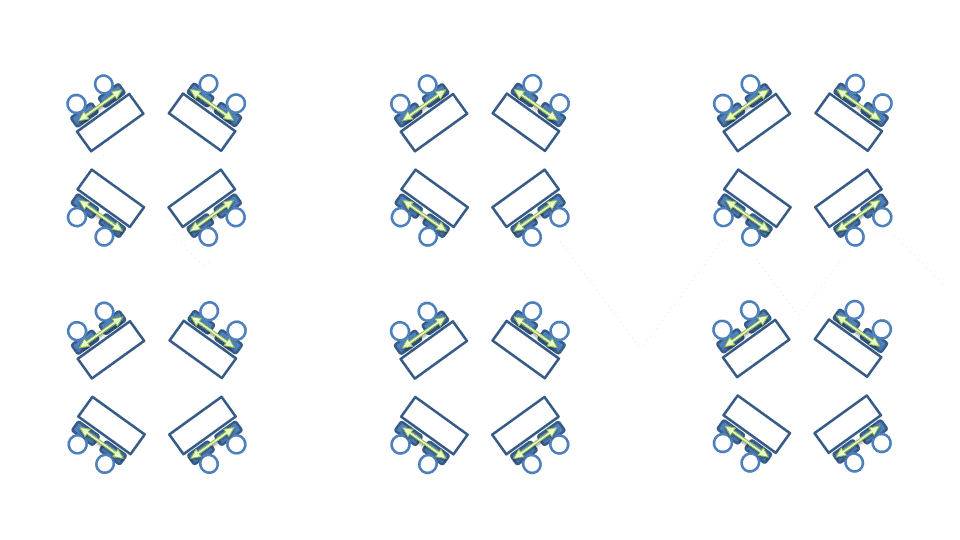Discussion
On this page
Debate
An instructional approach used to encourage discussion between two or more people who are positioned on opposite sides of an issue or topic.
Promotes: communications, critical thinking, argumentative skills, research
- About Debate (SALTISE)
- Debate Active Learning Activities (SALTISE)
- Tips on running debates in your classroom – Video (Harvard University)
Learning Cells
This is used to get students to ask and answer questions they develop themselves based on a reading or lecture.
Promotes: analysis and knowledge acquisition
Learning cells is a technique used to get students to ask and answer questions they develop themselves based on a reading or lecture.
To prepare, students listen to the lecture or do the assigned reading and write questions they have about the material. In class, students work in pairs and ask each other their questions while the instructor circulates, giving feedback and clarifying when appropriate.

Think-Pair-Share
Students take time on their own to consider a question, then with a partner and, optionally, after with the entire class.
Promotes: analysis and critical thinking, knowledge integration and synthesis
Teaching Technique 37: Think-Pair-Share video © The K. Patricia Cross Academy.
Online Teaching Adaptation: Think-Pair-Share video © The K. Patricia Cross Academy.
Think-pair-share is an active learning technique that encourages peer-to-peer collaboration and opportunities for creating a greater sense of classroom community. Students are given a single question to briefly think about individually. They are then asked to share and discuss this question with a partner seated next to them. This paired discussion can then be followed by a full class discussion so that the class can benefit from a broader range of answers and a more comprehensive exploration of the questions. This technique provides opportunities for clarifying misinformation and prompts critical reflection.


